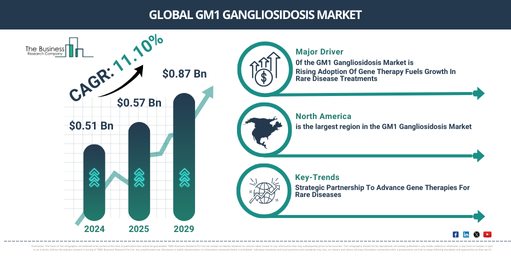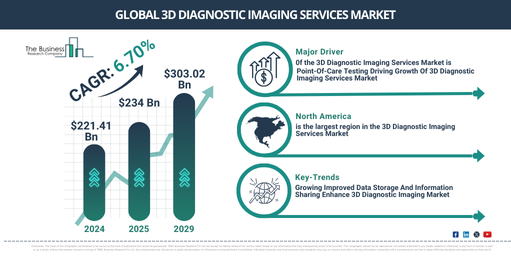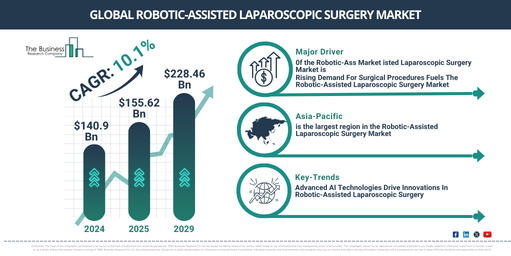GM1 Gangliosidosis Market Insights 2025-2034: Growth Dynamics, Trends, and Strategic Opportunities
Updated 2025 Market Reports Released: Trends, Forecasts to 2034 – Early Purchase Your Competitive Edge Today!
What are the Key Projections for the CAGR of the GM1 Gangliosidosis Market From 2025 to 2034?
The market for GM1 gangliosidosis has experienced swift expansion in the past few years. The market size is projected to surge from $0.51 billion in 2024 to $0.57 billion in 2025, boasting a compound annual growth rate (CAGR) of 11.4%. This accelerated growth during the historical period can be ascribed to a rise in the number of GM1 gangliosidosis patients, an expanding area of emphasis within the GM1 gangliosidosis sphere, an increased awareness of rare diseases, the growing trend of patient-oriented research, and a heightened focus on early intervention measures.
Expectations point to a brisk expansion in the GM1 gangliosidosis market in the coming years, projecting a growth to $0.87 billion in 2029 with a compound annual growth rate (CAGR) of 11.1%. The factors contributing to this surge in the predicted period include an increase in GM1 gangliosidosis cases, a rise in lysosomal storage disorder, an increasing number of clinical trials, a growing emphasis on gene therapy and editing, the rise of personalized and precision medicine, and an increase in the implementation of genetic screening programs. Among the major trends to watch in the forecast period are genetic-editing technology progressions, the inclusion of technology in healthcare, diagnostic technique advancements, cutting-edge formulations, and progress in genetic therapies.
What Combination of Drivers Is Leading to Accelerated Growth in the GM1 Gangliosidosis Market?
The growth of the GM1 gangliosidosis market is anticipated to be propelled by the rising acceptance of gene therapy. Gene therapy is a medical procedure that involves the modification or substitution of genes in an individual’s cells to treat or prevent diseases. This growing acceptance of gene therapy is fueled by advances in genetic research, improved results for previously incurable conditions, and increasing regulatory encouragement for innovative treatments. In the case of GM1 gangliosidosis, gene therapy involves providing a functional copy of the defective gene (GLB1) to the cells of the patient to restore the activity of the ß-galactosidase enzyme and reduce the buildup of toxic substrate. For example, the American Society of Gene & Cell Therapy, a non-profit medical and scientific organization based in the US, stated in April 2024 that the number of phase III gene therapy clinical trials increased by 10% in the fourth quarter, marking the first quarterly increase since the third quarter of 2022. Consequently, the GM1 gangliosidosis market’s expansion is being spurred by the increasing acceptance of gene therapy.
Explore Comprehensive Insights Into The Global GM1 Gangliosidosis Market With A Free Sample Report:
https://www.thebusinessresearchcompany.com/sample.aspx?id=21194&type=smp
What Are the Key Industry Players Leading the Charge in the GM1 Gangliosidosis Market’s Growth?
Major companies operating in the GM1 gangliosidosis market are Pfizer Inc., Sanofi S.A., Novartis AG, Takeda Pharmaceutical Company Limited, Sarepta Therapeutics Inc., CRISPR Therapeutics AG, REGENXBIO Inc., Passage Bio Inc., Orchard Therapeutics plc, AVROBIO Inc., uniQure N.V., GEMMA Biotherapeutics Inc., Lysogene S.A., AZAFAROS B.V., BioStrategies LC, Sio Gene Therapies Inc., Gain Therapeutics Inc., Dorphan S.A., bluebird bio Inc., Axovant Gene Therapies Ltd., SphinCS GmbH.
How Are Market Trends and Shifts Impacting the Growth Trajectory of the GM1 Gangliosidosis Market?
Leading businesses in the GM1 gangliosidosis market are strategizing partnerships to maintain their market dominance. These strategic collaborations are pivotal for enhancing gene therapy innovations by merging proficiency, resources, and advanced technology to expedite studies, clinical tests, and commercialization. For instance, in October 2024, a collaboration happened between GEMMA Biotherapeutics Inc., a biotechnology company situated in the US, and Oswaldo Cruz Foundation (Fiocruz), a health research institution located in Brazil. They aim to create gene treatments for unusual diseases – GM1 gangliosidosis being one of them. This partnership incorporates up to $100 million funding from Fiocruz for clinical study and manufacturing. The focus is to make these cutting-edge treatments accessible via Brazil’s public healthcare network. The partnership signifies a technology transfer and intends to make treatments available which were previously restricted to wealthier demographics.
Secure Your Global GM1 Gangliosidosis Market Report Now for Fast and Efficient Delivery!
https://www.thebusinessresearchcompany.com/report/gm1-gangliosidosis-global-market-report
Which Growth-Oriented Segments of the GM1 Gangliosidosis Market Are Leading the Industry’s Development?
The GM1 gangliosidosis market covered in this report is segmented –
1) By Disease Type: Type 1 GM1 Gangliosidosis, Type 2 GMT Gangliosidosis, Type 3 GMT Gangliosidosis
2) By Treatment: Anticonvulsants, Bone Marrow Transplantation, Cord-Blood Hematopoietic Stem-Cell Transplantation, Enzyme Replacement, Gene Therapy
3) By End-User: Research Institutes, Hospitals, Other End-Users
Subsegments:
1) By Type 1 GM1 Gangliosidosis: Classic Infantile Onset, Atypical Infantile Onset
2) By Type 2 GM1 Gangliosidosis: Classic Juvenile Onset, Atypical Juvenile Onset
3) By Type 3 GM1 Gangliosidosis: Classic Adult Onset, Atypical Adult Onset
What Regions Are Influencing the Dynamics of the GM1 Gangliosidosis Market?
North America was the largest region in the GM1 gangliosidosis market in 2024. The regions covered in the GM1 gangliosidosis market report are Asia-Pacific, Western Europe, Eastern Europe, North America, South America, Middle East, Africa.
What Key Elements Shape the Definition of the GM1 Gangliosidosis Market?
GM1 gangliosidosis is a rare, inherited neurodegenerative disorder caused by a deficiency of the ß-galactosidase (GLB1) enzyme, leading to toxic accumulation of GM1 gangliosides in the brain and other tissues. It results in progressive neurological decline, developmental delays, muscle weakness, and organ enlargement.
Browse Through More Similar Reports By The Business Research Company:
Osteoporosis Treatment Global Market Report 2025
https://www.thebusinessresearchcompany.com/report/osteoporosis-treatment-global-market-report
Postmenopausal Osteoporosis Treatment Global Market Report 2025
Next-Generation Antibody Therapeutics Global Market Report 2025
About The Business Research Company:
With over 15000+ reports from 27 industries covering 60+ geographies, The Business Research Company has built a reputation for offering comprehensive, data-rich research and insights. Armed with 1,500,000 datasets, the optimistic contribution of in-depth secondary research, and unique insights from industry leaders, you can get the information you need to stay ahead in the game.
Contact us at:
The Business Research Company: https://www.thebusinessresearchcompany.com/
Americas +1 3156230293
Asia +44 2071930708
Europe +44 2071930708
Email us at [email protected]
Follow us on:
LinkedIn: https://in.linkedin.com/company/the-business-research-company
YouTube: https://www.youtube.com/channel/UC24_fI0rV8cR5DxlCpgmyFQ
Global Market Model: https://www.thebusinessresearchcompany.com/global-market-model
Found this article helpful? Share it on:



